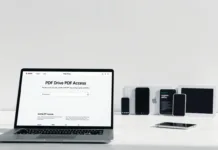Choosing the right inner tube for your ebike is crucial for a smooth and enjoyable ride. The inner tube is responsible for maintaining proper tire pressure, providing cushioning, and ensuring optimal performance. In this article, we will guide you through the process of selecting the perfect inner tube for your bike, taking into consideration important factors and offering valuable tips.
Importance of Choosing the Right Inner Tube
Having the appropriate inner tube for bike is essential for several reasons. First and foremost, it affects your riding experience and comfort. A properly fitted inner tube minimizes the risk of flats and blowouts, providing a stable and safe ride. Additionally, selecting the right inner tube can enhance the efficiency and performance of your ebike, as it contributes to better traction, handling, and overall speed.
Factors to Consider when Choosing an Inner Tube
- Compatibility with Tire Size and Width
When selecting an inner tube, it is crucial to consider the compatibility with your ebike’s tire size and width. Inner tubes come in various sizes and widths, and using an incorrect size can lead to poor fitting or potential damage. - Valve Type
Inner tubes feature different valve types, such as Presta and Schrader valves. Ensure that the valve type matches your ebike’s rim and that you have the appropriate valve adapter if necessary. - Riding Conditions
Consider the riding conditions you typically encounter. If you frequently ride on rough or off-road terrain, you may opt for thicker and more durable inner tubes that offer better puncture resistance. - Tube Material
Inner tubes can be made of different materials, including butyl rubber and latex. Butyl rubber tubes are more common, affordable, and provide good overall performance. Latex tubes, on the other hand, offer lower rolling resistance but are more prone to punctures and require frequent inflation.
Understanding Inner Tube Sizes and Valve Types
To choose the right inner tube, you need to understand how inner tube sizes are measured and the different valve types available.
- Inner Tube Sizing
Inner tube sizes are typically marked on the tube itself or the tire’s sidewall. The sizing is indicated in inches or millimeters and usually includes the diameter and width measurements. Ensure you select an inner tube that matches your tire’s size. - Valve Types
- Presta Valve: This valve is slender and commonly found on higher-end bikes. It requires a specific pump head and features a locking nut to secure it to the rim.
- Schrader Valve: Similar to valves found on car tires, Schrader valves are wider and more common on entry-level and recreational bikes. They are easier to inflate and are compatible with most air pumps.
Different Types of Inner Tubes
There are various types of inner tubes available in the market, each with its own advantages and suitable applications. Some common types include:
- Standard Inner Tubes: These tubes are the most common and affordable option. They provide reliable performance for everyday riding.
- Thorn-Resistant Inner Tubes: Designed with additional layers of puncture-resistant material, these tubes offer enhanced protection against sharp objects.
- Lightweight Inner Tubes: Ideal for those seeking maximum performance, these tubes are made from lightweight materials to reduce rolling resistance and increase speed.
- Self-Sealing Inner Tubes: Equipped with a sealant, these tubes automatically seal small punctures to prevent air leakage, allowing you to continue riding without immediate repairs.
How to Measure Inner Tube Size
To determine the correct inner tube size for your ebike, follow these steps:
- Remove the old inner tube from the tire.
- Check the sidewall of your tire for a series of numbers indicating the size. The first number represents the tire’s diameter, and the second number denotes the width.
- Match the tire size with the corresponding inner tube size. Ensure the inner tube width range includes your tire’s width.
Tips for Selecting the Right Inner Tube
- Check the recommended tire pressure: Refer to your ebike’s manual or the tire sidewall for the recommended tire pressure range. Choose an inner tube that can handle the recommended pressure to ensure optimal performance.
- Consider the terrain: If you frequently ride on challenging terrain, such as rocky trails or rough roads, opt for puncture-resistant or heavy-duty inner tubes to minimize the risk of flats.
- Invest in quality: Choosing a reliable and reputable brand for your inner tube ensures better overall quality and durability.
Steps to Replace an Inner Tube
If you need to replace your ebike’s inner tube, follow these steps:
- Remove the wheel from the bike.
- Deflate the inner tube completely and remove the tire from the rim.
- Carefully remove the old inner tube and inspect the tire for any debris or sharp objects that may have caused the puncture.
- Insert the new inner tube into the tire, ensuring it is evenly distributed and not twisted.
- Reinstall the tire onto the rim, making sure the valve stem is properly aligned with the valve hole.
- Inflate the new inner tube gradually, checking for any bulges or misalignment.
Maintaining and Extending the Life of Inner Tubes
To prolong the lifespan of your ebike’s inner tubes and ensure optimal performance, consider the following maintenance tips:
- Regularly check tire pressure and inflate as needed.
- Inspect tires for signs of wear, cracks, or cuts that may indicate the need for replacement.
- Avoid riding over sharp objects and debris whenever possible.
- Use tire liners or puncture-resistant strips for added protection.
- Store your ebike in a cool, dry place to prevent damage from extreme temperatures or moisture.
Common Inner Tube Issues and Troubleshooting Tips
- Punctures: To repair small punctures, use a patch kit or replace the inner tube if the damage is significant.
- Blowouts: Overinflation, impact damage, or incompatible tube sizes can lead to blowouts. Always follow the recommended tire pressure and ensure the inner tube size matches your tire.
- Valve Leaks: Check the valve for any leaks by applying soapy water. If bubbles form, tighten the valve or replace it if necessary.
- Pinch Flats: These occur when the inner tube gets pinched between the tire and rim due to inadequate tire pressure. Maintain proper inflation to avoid pinch flats.
Conclusion
Choosing the right inner tube for your ebike is essential for a safe and enjoyable riding experience. By considering factors such as tire size, valve type, riding conditions, and tube material, you can select the perfect inner tube that suits your needs. Additionally, understanding inner tube sizing and following proper installation and maintenance practices will help you ride smoothly and minimize the risk of flats and other issues.
FAQ’s
- Q: Can I use any inner tube for my ebike?
A: It is important to choose an inner tube that matches your ebike’s tire size and width for a proper fit and optimal performance.
- Q: Are self-sealing inner tubes effective?
A: Self-sealing inner tubes can provide temporary repairs for small punctures, but larger or multiple punctures may still require further attention.
- Q: How often should I check my tire pressure?
A: It is recommended to check your tire pressure before each ride or at least once a week to ensure proper inflation.
- Q: Can I use a road bike inner tube for my ebike?
A: Road bike inner tubes are designed for narrower tires and higher pressures. It is best to choose an inner tube specifically designed for ebike tires.
- Q: Should I replace both the tire and inner tube together?
A: While it is not always necessary, it is recommended to replace both the tire and inner tube at the same time for optimal performance and compatibility.



